Venice Biennale 2019: The top ten pavilions
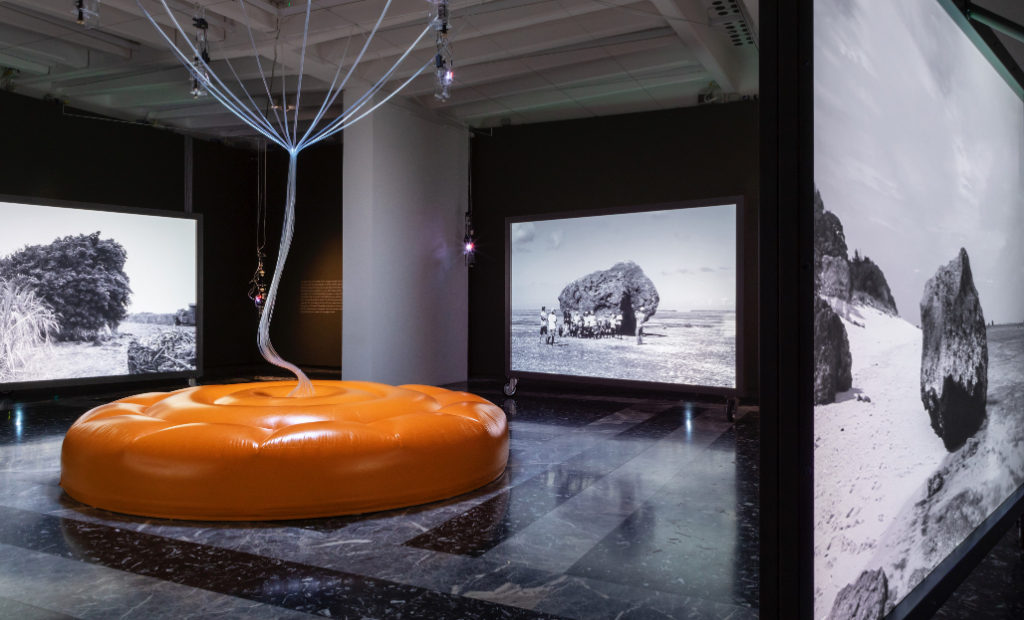
2019’s edition of the Venice Biennale brings together pavilions by 90 countries at its two main sites – the waterside Arsenale and the picturesque Giardini – as well as various old palaces and warehouses across the city of Venice. It’s a contemporary art spectacle on a staggering scale, with some of the biggest names across the international art scene coming together to collaborate (and compete) across every imaginable medium. This guide to the top ten pavilions might help you to navigate your way through the madness.
Austria, Giardini
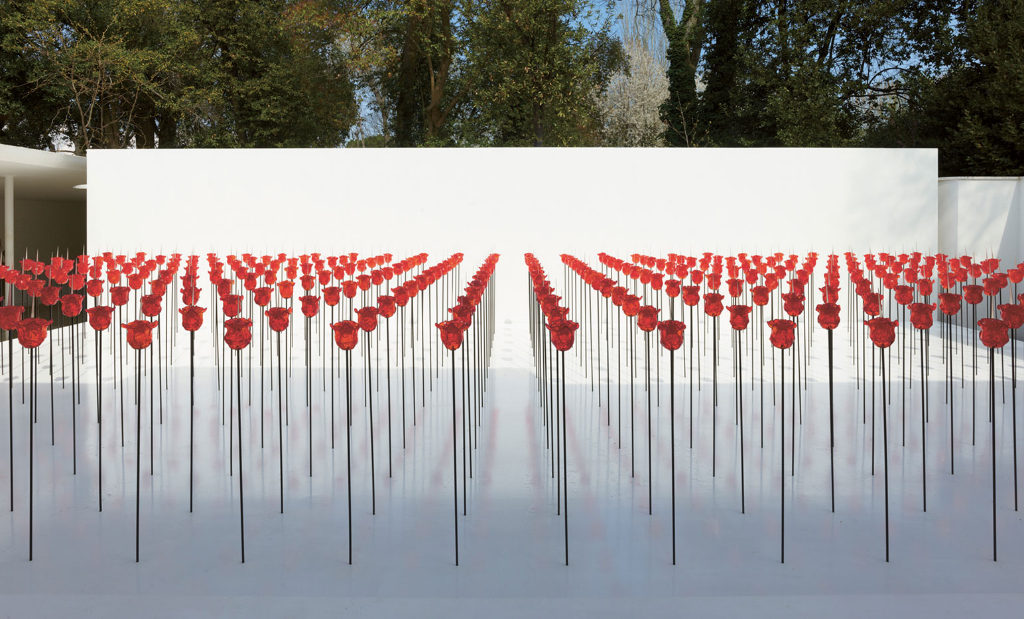
Image: Installation view, Austrian Pavilion, Biennale Art 2019 © Renate Bertlmann, photo by Sophie Thun
The respected artist Renate Bertlmann has taken on the imposing architecture of the Austrian Pavilion this year, breaking up the modernist façade with giant cursive lettering: “amo ergo sum”. Inside, the rephrasing of the philosophical principle “cogito ergo sum” continues – the installation as a whole is titled Discordo Ergo Sum (“I dissent, therefore I am”). The highlight is an installation of knife-roses in the central courtyard, highlighting Bertlmann’s message of subversion and her aim of dismantling perceived social symbols surrounding issues of gender relations and power.
Belgium, Giardini
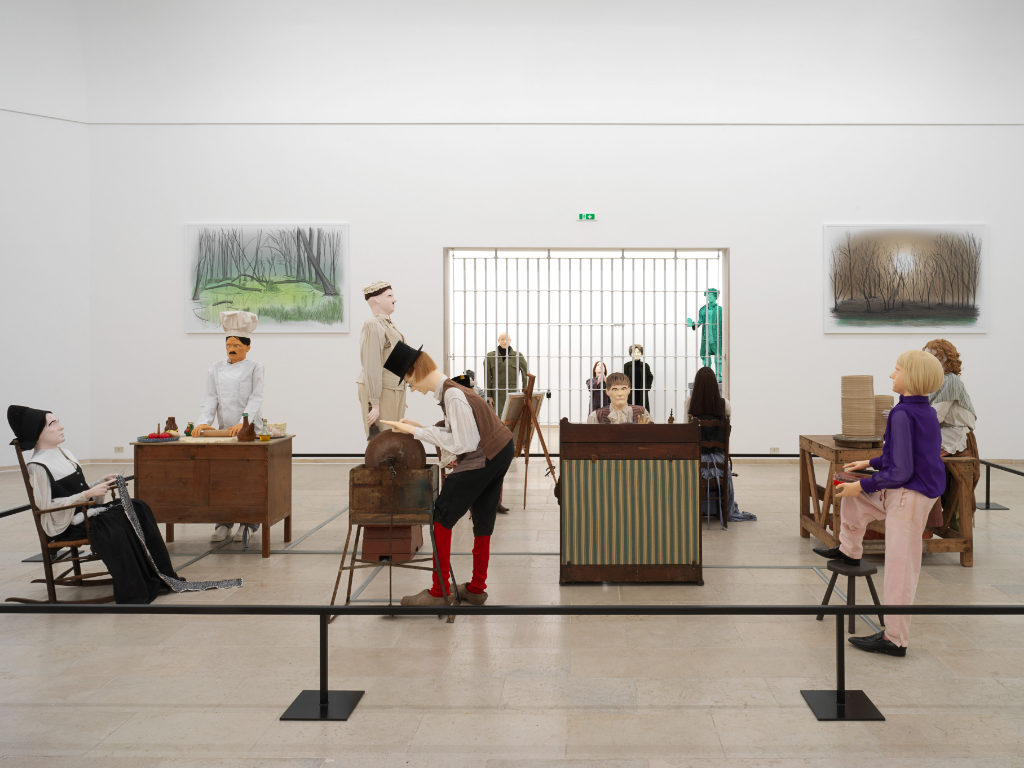
Image: Mondo Cane by Jos de Gruyter & Harald Thys, exhibition curated by Anne-Claire Schmitz.
Courtesy and copyright of the artists and the Belgian Pavilion, photo by Nick Ash
A contender for the weirdest pavilion this year. Artists Jos de Gruyter and Harald Thys have created a space that feels part futuristic lunatic asylum, part vintage folk museum. Set within the clean modernist architecture of the pavilion, the artists have displayed a tableau of human figures engaged in old-fashioned activities: knitting, sharpening a knife, or playing the organ, for instance. Some are animatronic, triggered by motion sensors. Around the edge, separated from the public by iron bars, are other figures, this time apparently mad or unwanted by society. Creepy, but strangely engaging.
Britain, Giardini
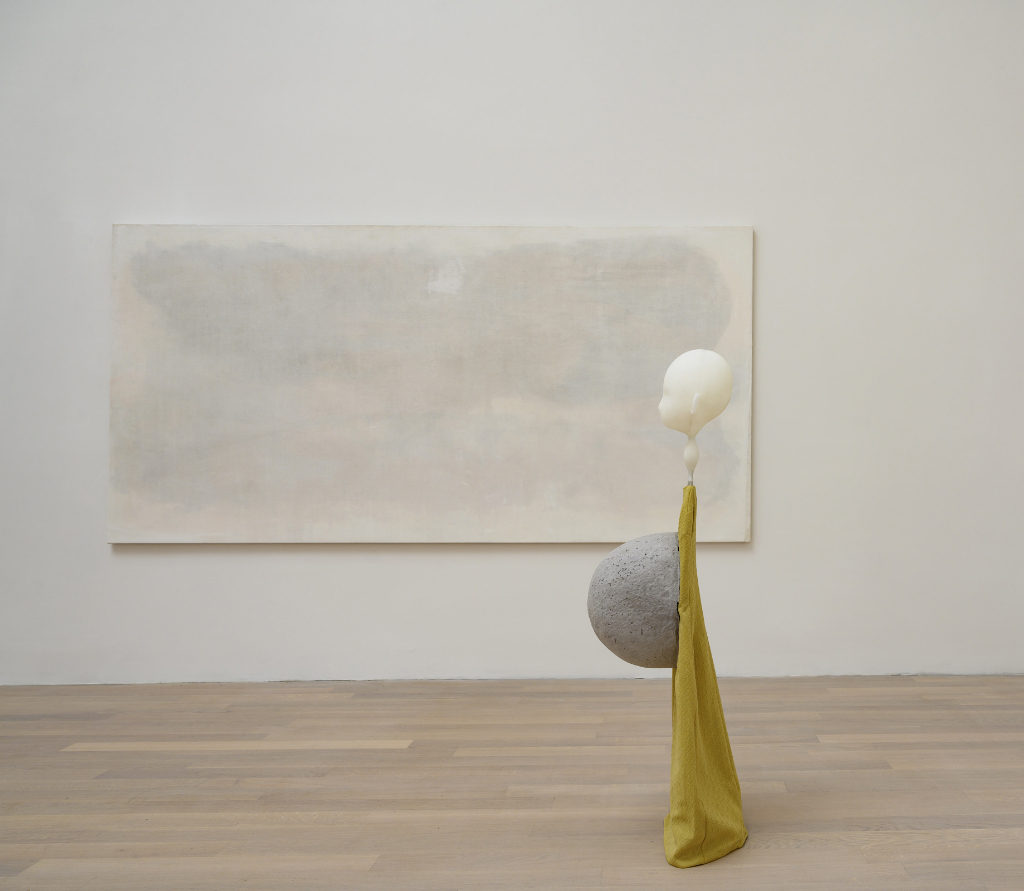
Image: Installation view, Cathy Wilkes, Untitled, 2019 (detail), mixed media
Cathy Wilkes may not be a household name in Britain, but her subtle and moving installation in the vast spaces of the British Pavilion shows she is deservedly confident. Curated by the talented Zoe Whitley, the show features a mixture of collected everyday items, small paintings and disconcerting sculptures of delicate human figures sporting concrete pregnancy bumps. The installation’s meaning is open-ended, with no prescriptive wall text telling visitors what to think. Instead, Wilkes evokes notions of the womb and the atom, pathos and interference, opening up vast ranges of possible discourses. Understated but powerful.
France, Giardini
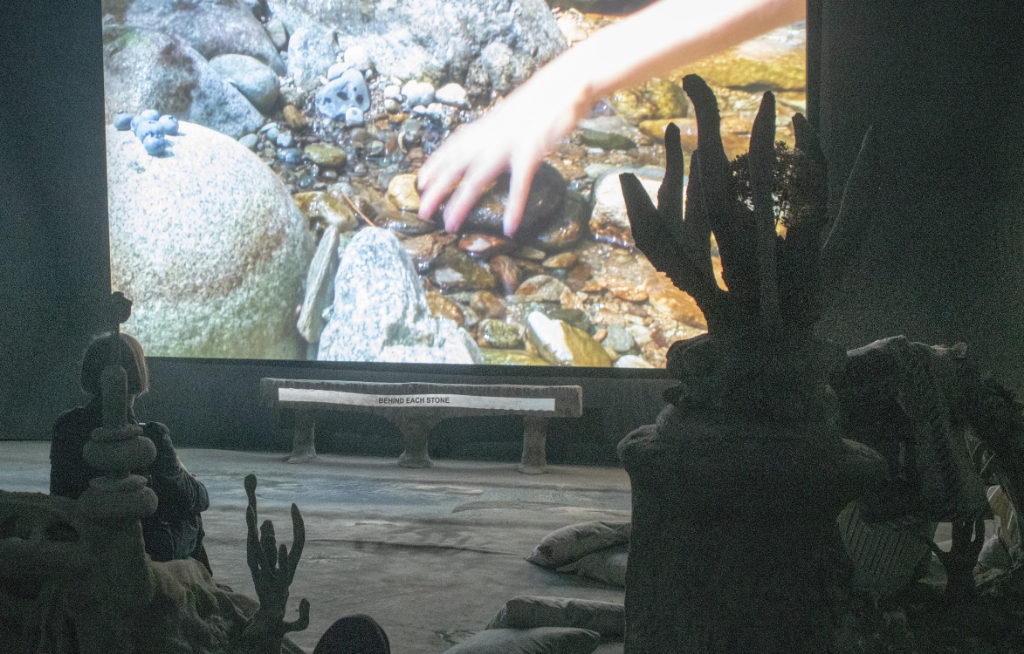
Image: Laure Prouvost, Deep Blue Sea Surrounding You/Vois Ce Bleu Profond Te Fondre
French Pavilion, photo by Giacomo Cosua
The pavilion with the longest queue in the history of pavilion queues, this year’s contribution from France has been created by Turner Prize-winning artist Laure Prouvost. Entering the building via a specially dug underground tunnel, visitors are drawn into the clutches of a giant octopus for an immersive experience. The exhibition takes the form of an invitation to melt into a liquid and tentacular universe amongst the different unveiled and shared realities, which intermingle here. Alternative modes of thinking, looking and interacting are suggested: the artist describes the space as: “A trip to our unconscious. With the help of our brains in our tentacles, we dig tunnels to the past and the future towards Venice. Let’s follow the light.”
Ghana, Arsenale
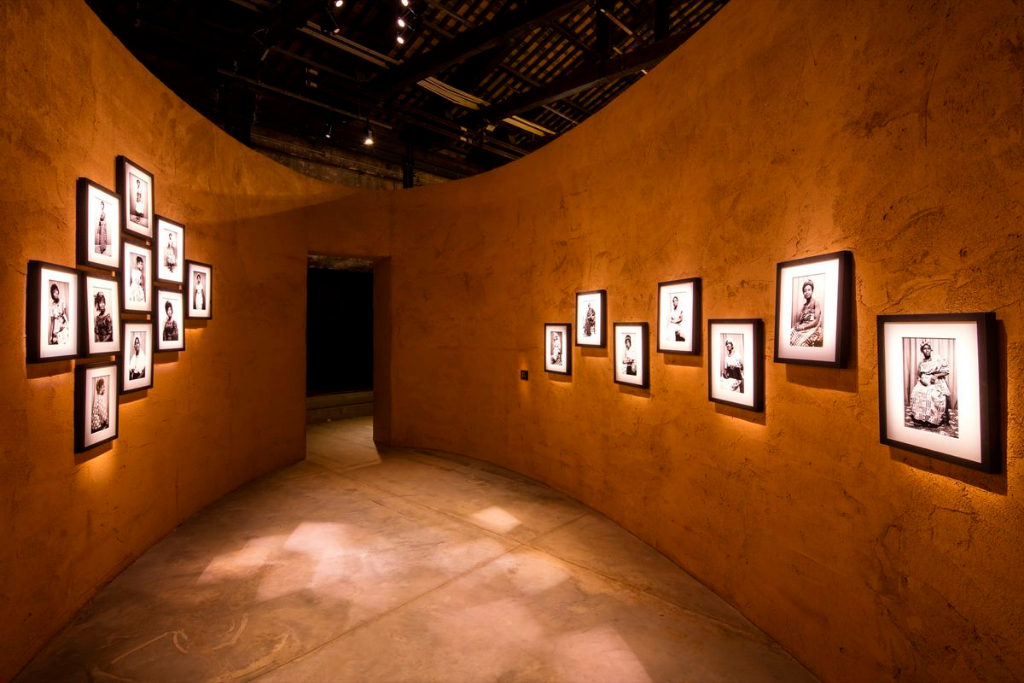
Image: “Ghana Freedom”, featuring Felicia Abban, Untitled (Portraits and Self-portraits), c. 1960-70s
Courtesy of the artist, photo by David Levene
The nation of Ghana is presenting a pavilion for the first time at this year’s Biennale. The group show, curated by Nana Oforiatta Ayim, brings together some of the nation’s brightest stars in a beautifully pitched space designed by architect David Adjaye. The works are well-chosen, highlighting the diversity of Ghana’s history and artistic production at the same time as pointing to a strong sense of shared cultural identity. Highlights include new, enormous bottle-top tapestries by El Anatsui, as well as a powerful three-channel film by John Akomfrah.
India, Arsenale
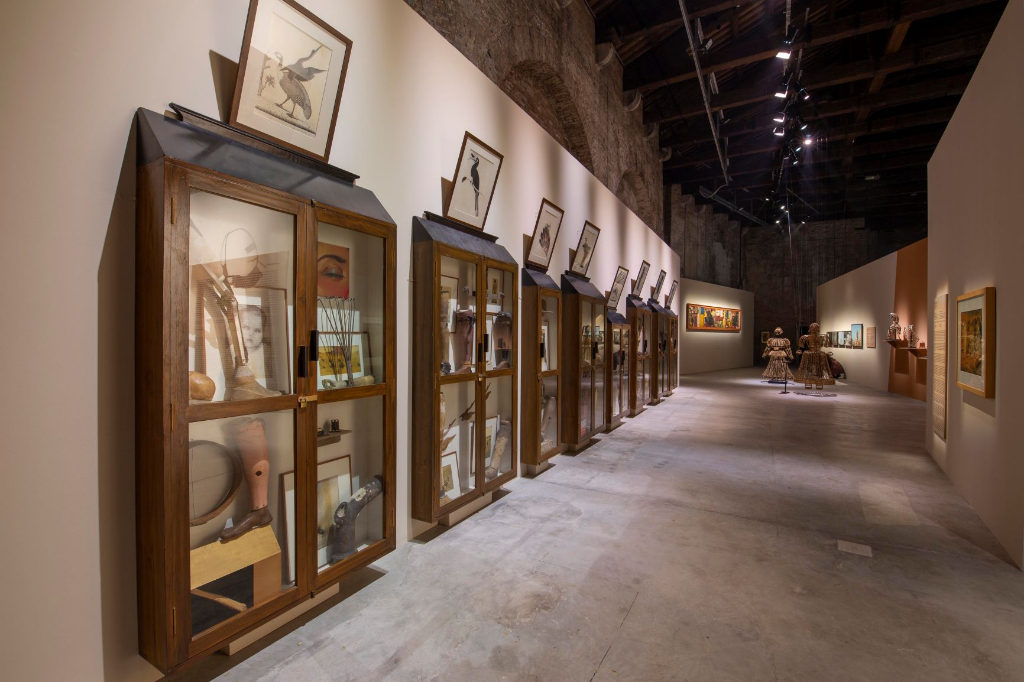
Image: Installation view, Our Time for a Future Caring, Atul Dodiya, Broken Branches, 2002
Collection of Shumita and Arani Bose, New York
Titled Our Time for a Future Caring, India’s offering is only the second time the nation has had a pavilion at the Venice Biennale. The result is a thoughtful and thought-provoking group exhibition curated by Roobina Karode, Director and Chief Curator at the Kiran Nadar Museum of Art. The show critically engages with the figure and philosophies of Mahatma Gandhi, reflecting on his enduring impact and the contemporary relevance of his ideals. The works on show both deal specifically with India’s rich history, and explore Gandhi’s influential ideas more broadly, considering the contemporary international relevance of notions such as non-violence and freedom.
Ireland, Arsenale
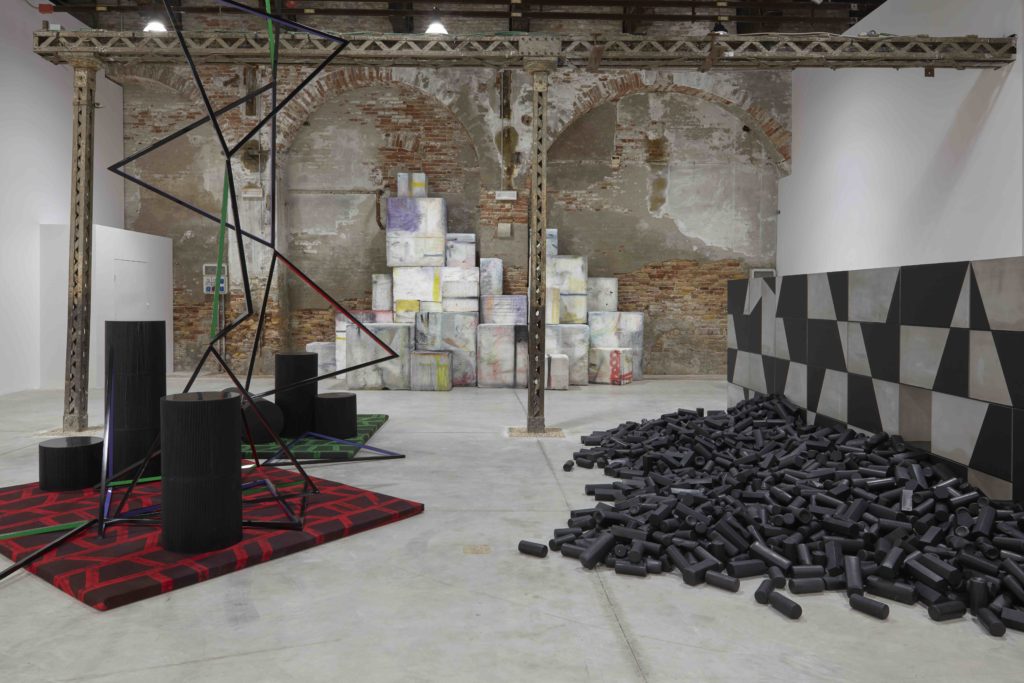
Image: Eva Rothschild, The Shrinking Universe, Irish Pavilion, Biennale Art
Photo by Robert Glowacki
Artist Eva Rothschild takes centre stage at this year’s Irish pavilion, with a solo exhibition entitled The Shrinking Universe. Exploring the potentialities inherent in sculpture, Rothschild presents a complete and immersive sculptural environment. The artist encourages visitors to experience the work through the body as well as through the eye, subverting the traditional expectation that we are allowed to look but not touch. Climbing up a pile of coloured cubes, visitors can gain a different perspective on the exhibition, even while they activate the artworks and make them complete through bodily presence.
Japan, Giardini
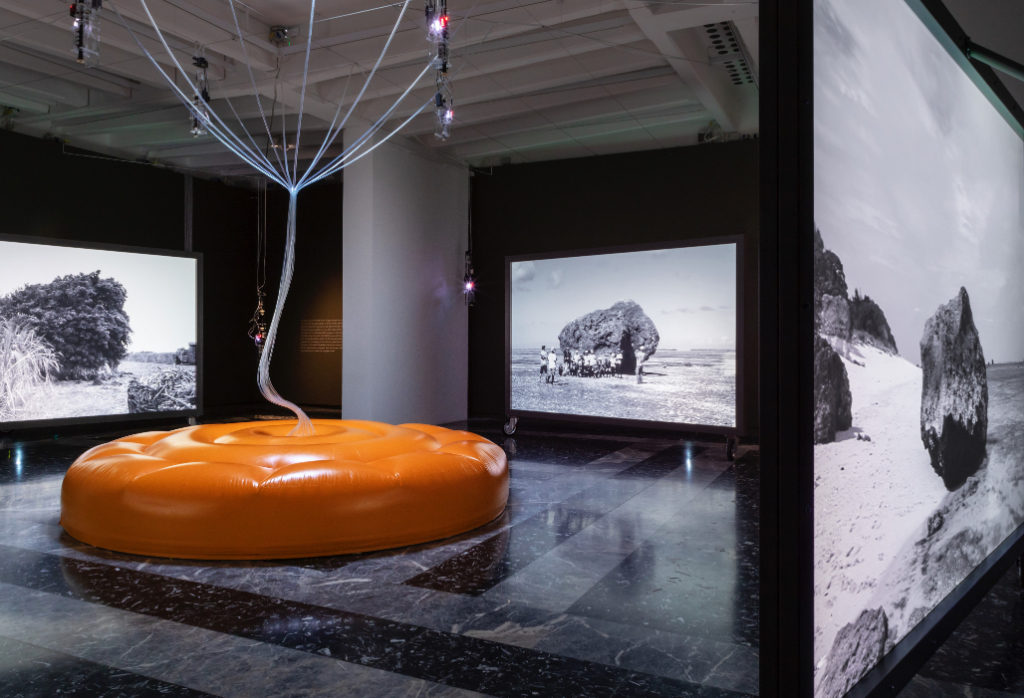
Image: Installation view, Motoyuki Shitamichi, Tsunami Boulder; Taro Yasuno, Composition for Cosmo-Eggs: Singing Bird Generator; Toshiaki Ishikura, spatial interaction designed by Fuminori Nosaku
This year’s entry from Japan manages to be both fun and moving in equal measure. A collaboration between an artist, composer, anthropologist and architect, the installation attempts to explore how and in what places we can survive in a fast-changing world. Built around the idea of “Tsunami Boulders” – large rocks washed ashore from beneath the ocean after a natural disaster such as an earthquake – the pavilion considers “ecologies of co-existence” between human beings and the natural world. Sounds reminiscent of bird song are played through recorders hanging from the ceiling of the space, blown by the building’s central “lungs” – a giant orange inflatable column on which visitors are encouraged to recline, pushing more air through the musical instruments.
Lithuania, Marina Militare, Castello
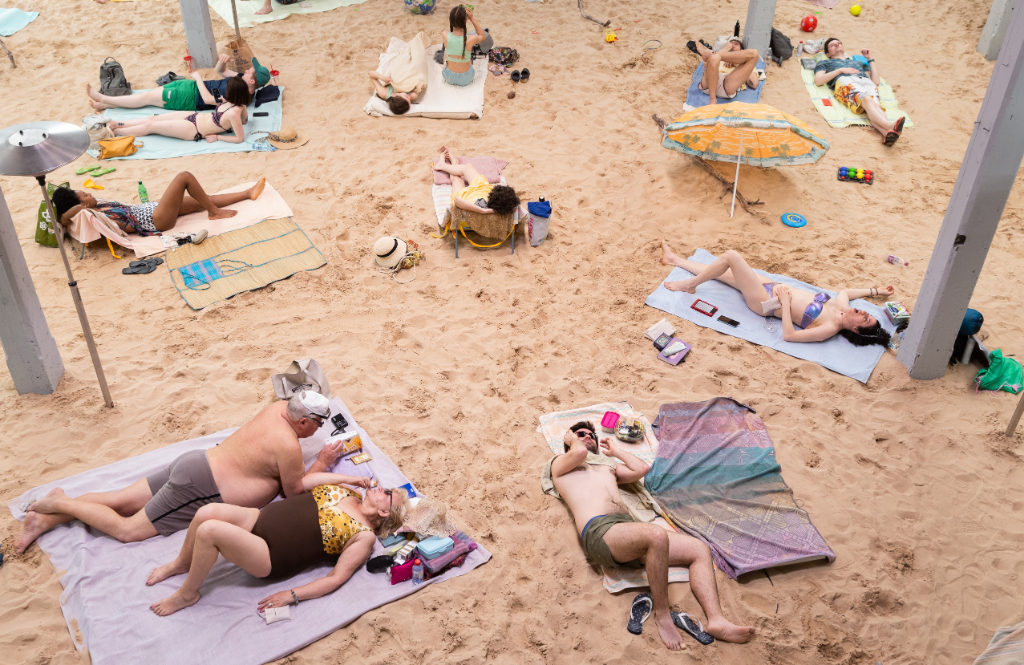
Image: Rugile Barzdziukaite, Vaiva Grainyte, Lina Lapelyte, Sun & Sea (Marina), opera-performance
Biennale Arte 2019, Venice, photo by Andrej Vasilenko
The talk of the Biennale, and winner of this year’s Golden Lion award, this pavilion is a stunning example of art for the Anthropocene. Set away from the main areas of the Arsenale and Giardini, the pavilion has taken over an old military building and transformed it into an indoor beach, where performers play out a durational opera. The beach-goers sing about everything from their personal worries about getting sunburned or missing their plane, to broader, more distributed anxieties about planet-scale climate change. A collaboration between artists Rugilė Barzdžiukaitė, Vaiva Grainytė and Lina Lapelytė, and curated by the excellent Lucia Pietroiusti, Sun & Sea (Marina) really feels like art for our time.
Nordic Pavilion, Giardini
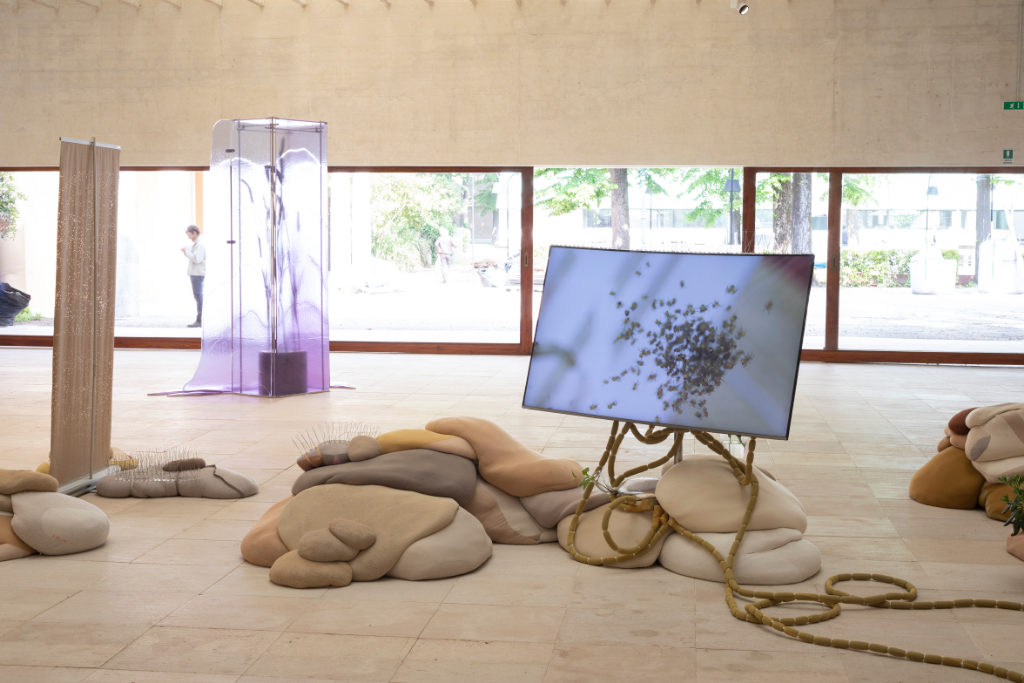
Image: nabbteeri, Ethnographies of a Homespun Spinelessness Cult and Other Neighbourly Relations, 2019
Photo by Finnish National Gallery/Pirje Mykkänen
Titled Weather Report – Forecasting Future, this year’s contribution by the Nordic Pavilion features work by three artists: Ane Graff from Norway, Ingela Ihrman from Sweden, and nabbteeri, an artist collective from Finland. Beautiful and deeply appealing, the group exhibition is dedicated to ecological modes of working and multi-species entanglements. Giant models of seaweed are draped from silver stands; crystals appear to grow from roots in pink phone booths; plants in jam jars rest precariously on top of pale sandbags and TV screens. The works respond closely to the architecture of the pavilion – challenging its supposed openness by drawing attention to its subtly installed pigeon spikes, or incorporating sprigs of plants from the Giardini around the building.
Anna Souter
The Venice Biennale 2019 is open from 11th May until 24th November 2017, for further information or to book visit the event’s website here.










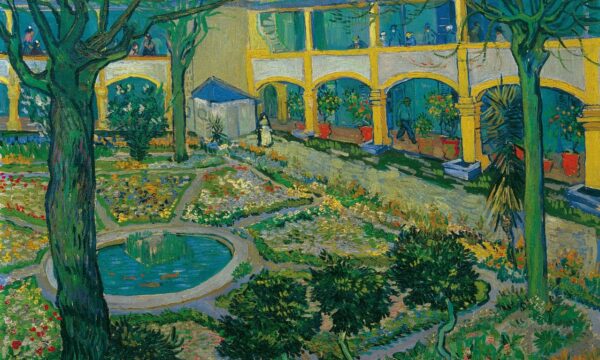


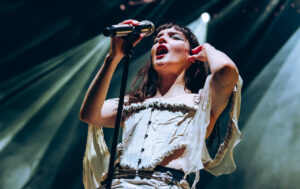








Facebook
Twitter
Instagram
YouTube
RSS